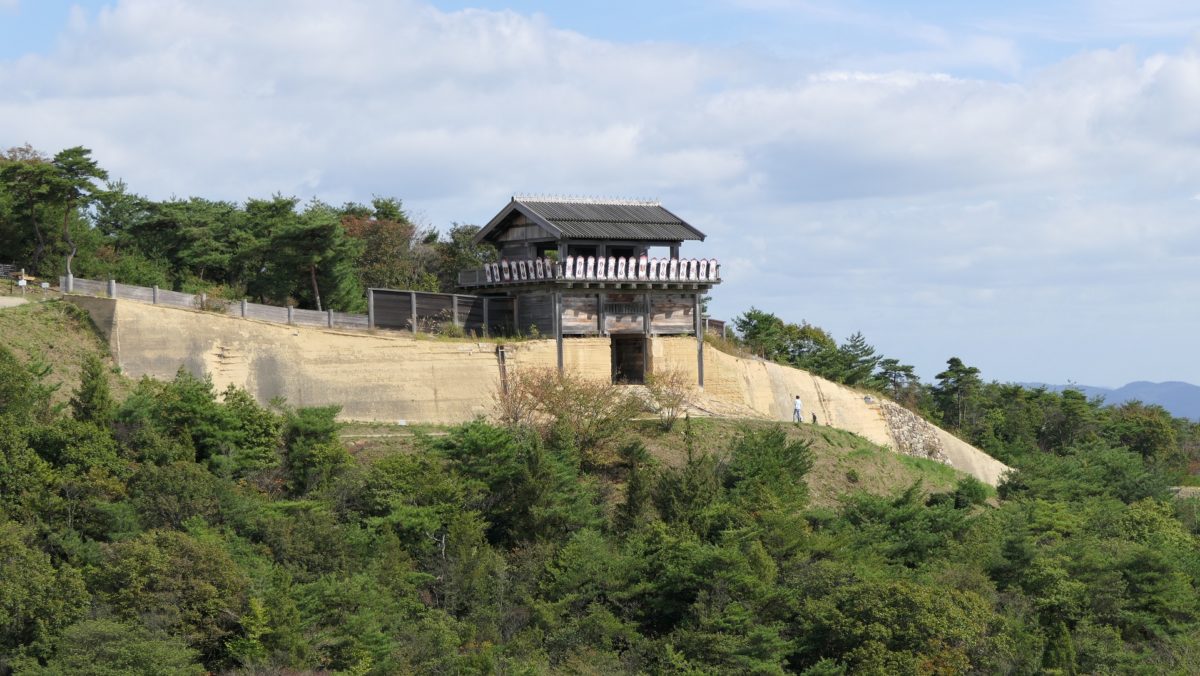目次~Table of Contents
立地と歴史~Location and History
伝説の城~Legendary Castle
「鬼ノ城」と名付けられ、現在の岡山県にあるこの城は、不可思議です。誰も城の由来を知らないのです。一切の記録に表れていないからです。地元の伝説によると、朝鮮から渡ってきた「温羅」という鬼がそこに住んでいたと言います。温羅はその一帯で悪事を働きました。そこで朝廷は、「吉備津彦」という貴族を派遣します。吉備津彦は温羅と戦い、これを倒したのでした。この地の人々は、この言い伝えをもってこの城を鬼ノ城と呼んでいるのです。この伝承は、日本の昔話で最も有名なものの一つ、「桃太郎」にもつながっていると言われています。
This castle named “Kino-jo”, or Devil’s Castle, located in what is now Okayama Prefecture, is mysterious. No one knows the origin of the castle, because it is not recorded in any document at all. In folk stories, a devil called “Ura” from Korea lived in the castle. He did bad things around the area. The Imperial Court sent a noble called “Kibitsu-hiko”. Kibutsu-hiko fought with Ura and defeated him. People call the castle Kino-jo based on this belief. It is also said that the belief might be connected to one of the most popular folk tales in Japan called “Momotaro”.

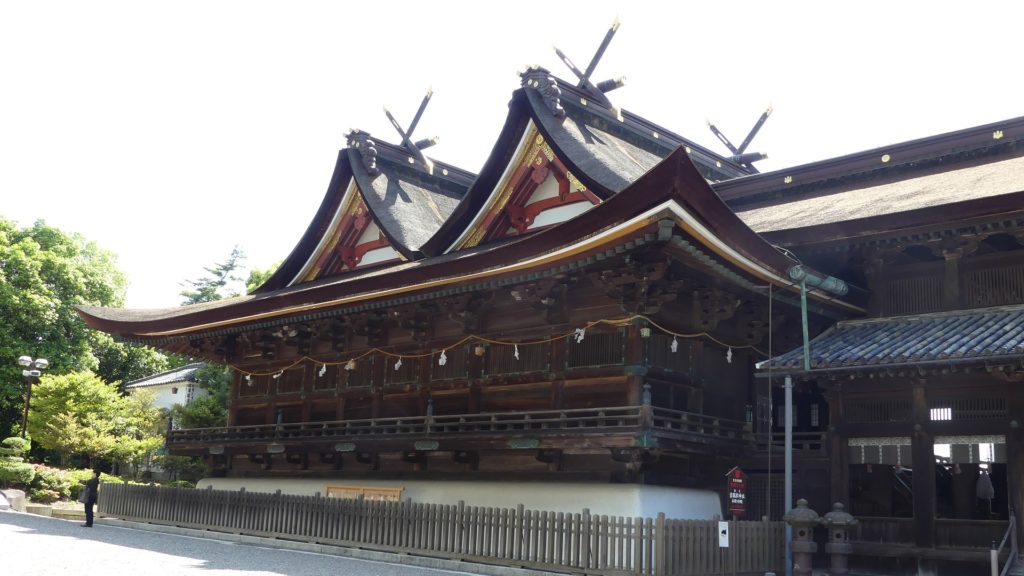
実は古代山城~In fact, Ancient Mountain Castle
しかしながら、調査研究によって、この城は西日本一帯にあった古代山城の一つであったことが判明しています。これらの城は、663年の朝鮮における白村江の戦いの後、朝廷によって築かれました。日本は百済を助けようとしたのですが、唐と新羅の連合軍に敗れたのです。天智天皇は連合軍による日本侵攻を恐れ、防御のためこれらの城を築かせました。鬼ノ城跡は、記録がある他の城と大変似通っており、歴史家は鬼ノ城は古代山城の一つと結論づけています。
However, it has recently been found out that the castle was one of ancient mountain castles in western Japan by researches and studies. They were built by the Imperial Court after the Battle of Baekgang, Korea in 663. Japan tried to help Baekje, but was beaten by the ally of Tang and Silla. Emperor Tenchi was scared of an invasion by the ally, so he built these castles for protection. The ruins of Kino-jo are very similar to other recorded ones. Historians have concluded Kino-Jo must be a an ancient mountain castle.
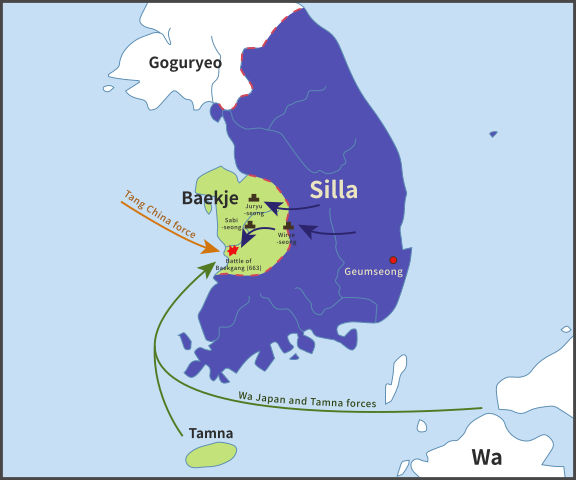
この城は、吉備高原の南端にあり、標高は約400mです。崖の部分は急ですが、高原に登ってしまうと比較的平らかです。また、この場所は古代の海岸線から約10kmの地点にあり、陣地を張るには最適な場所でした。ほどんどの日本の他の城とは違い、古代山城は主に外郭部分の防御施設から成り立っていました。中心部分には倉庫や兵舎のような施設がありました。
The castle was on the southern edge of Kibi-kogen Highlands which is about 400m above sea level. The cliffs are steep, but the top of the highlands are relatively smooth. It is also about 10 km away from the ancient coastline. It had the best location to be a strong point. Unlike most Japanese castles, ancient mountain castles mainly consisted of an outer fortification. Their center area had facilities like warehouses and barracks.
土塁に囲まれた城~Castle surrounded by Earthen Walls
鬼ノ城の場合、外郭の総延長は2.8kmあり、その約90%は土塁でしたが、残りの部分は石造りでした。城には4つの門、6つの水門、「角楼」と呼ばれる櫓がありました。とりわけ土塁は版築という方法で築かれ、いくつもの土の層を、ひとつひとつ踏み固めながら積み上げていくものです。更には、土塁の前後には石が敷き詰められていました。また、門の周辺には、外郭の内側に木の柵も並行して設けられていました。
In the case of Kino-Jo, the perimeter was about 2.8 km, about 90% of it was earthen walls, and the rest was work of stone. The castle also had four gates, six water gates, and a turret called “Kakuro”. In particular, the earthen walls were built in a method called Rammed Earth or “Hanchiku”. The method consists of building many earthen layers by ramming down each layer of soil. In addition, stones were placed in front and back of the walls. Wooden fences ran parallel to wall, inside the fortification around the gates.
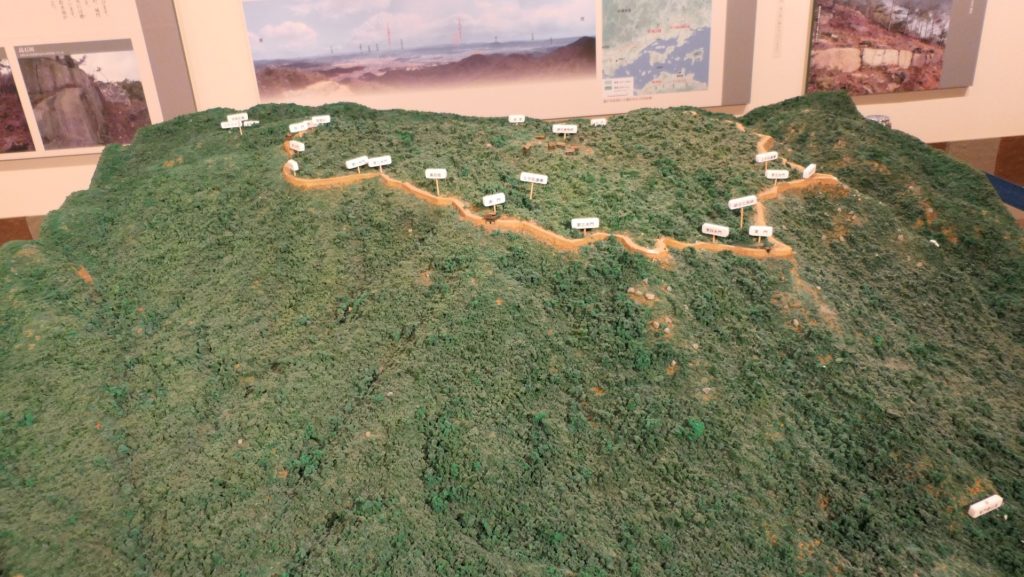
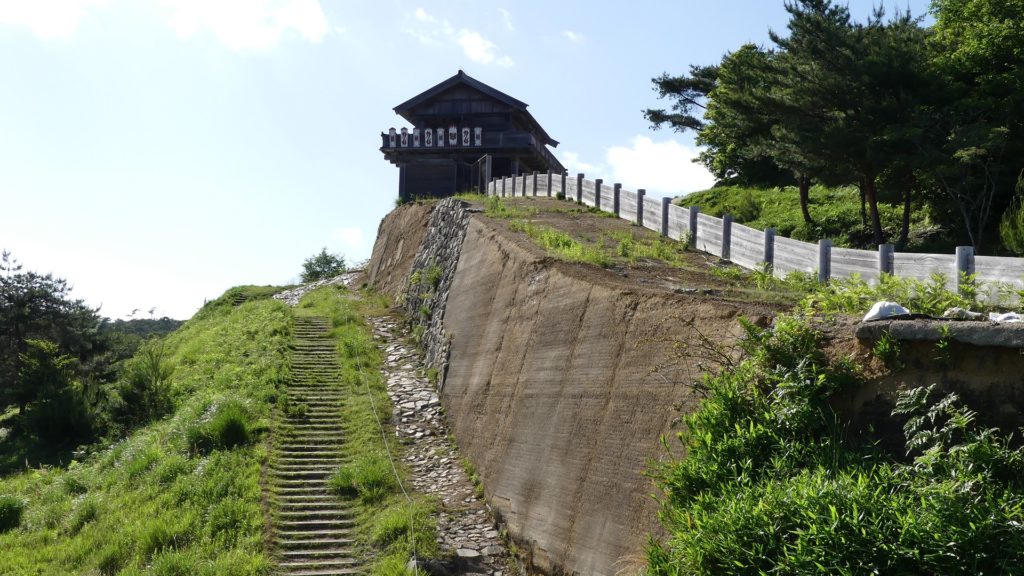
特徴~Features
現在、鬼ノ城跡は、鬼城山ビジターセンターを出発点として整備が進められています。ビジターセンターでは、遺跡に関する展示がされています。センターから登っていくと、トレッキングコースにもなっている城跡の外郭に着きます。その外郭を反時計回りに進んでいくと、最初は復元されているエリアです。
Now, the ruins of Kino-jo have been developed with the Kinojosan Visitor Center as the starting point. The visitor center has exhibitions about the ruins. You can climb up from the center to the outline of the ruins which can also be used for trekking. If you go along the outline counterclockwise, the first part is the restored area.
復元エリア~Restored Area
その中では西門が特に目立っています。その土塁、石垣、石舗道、木柵ができる限り忠実に再現されています。門の建物も、当時の類似の事例を参考にして再建されています。門の手前にある角楼は部分的に復元されています。その土台部分は、西門と同じように再建されていますが、構造物は現代に残る事例がないため再建できませんでした。
The restored West Gate is outstanding. Its earthen walls, stone walls, stone pavement, and wooden fences were rebuilt in the original way as much as possible. The gate building was also rebuilt referring to similar examples at that time. The Kakuro turret in front of the gate is partly restored. Its foundation was rebuilt in the same way as the West Gate, but its structure couldn’t be rebuilt because there are no modern examples of it.
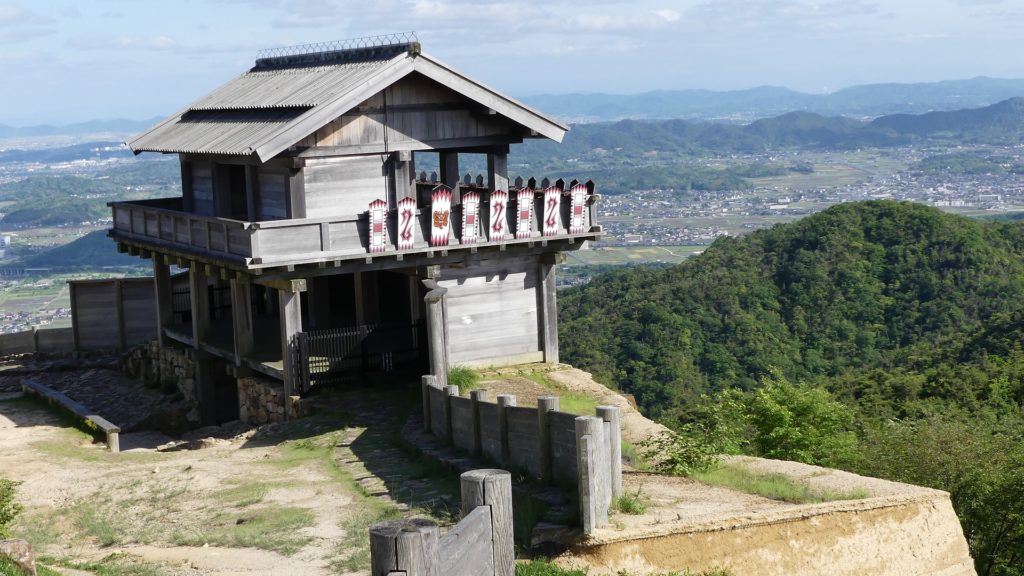
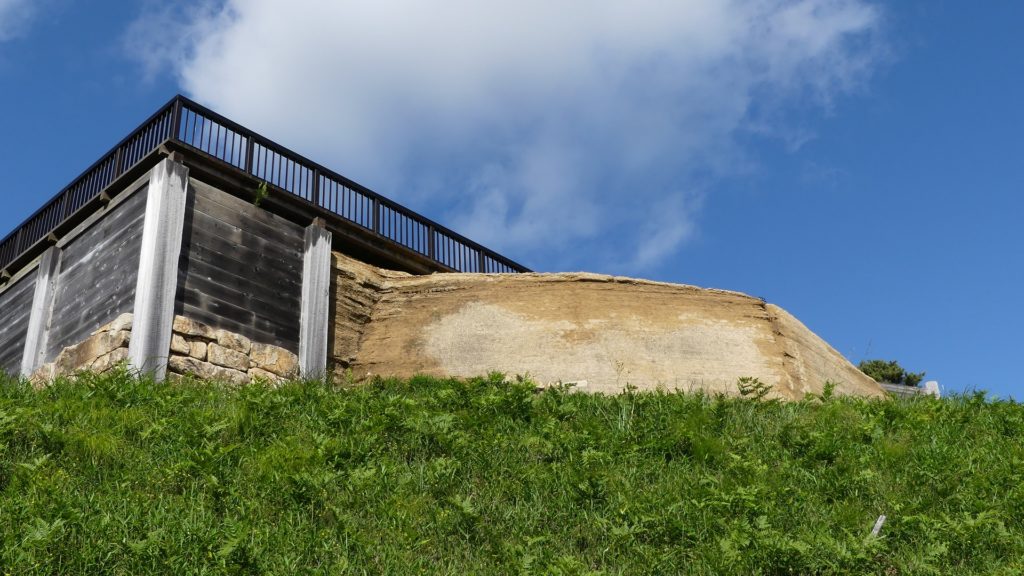
トレッキングコース~Tail for Trekking
その他の遺跡物は、修復され、そのまま展示されています。それでも見る価値は十分にあります。例えば、第二水門には排水溝があり、いまだに機能しています。東門跡周辺の野性味のある自然石群は必見です。
The other ruins were repaired and shown as they are, but are great to visit. For instance, the Second Water Gate has a drain which still works. You should check out wild natural stones around the East Gate Ruins.


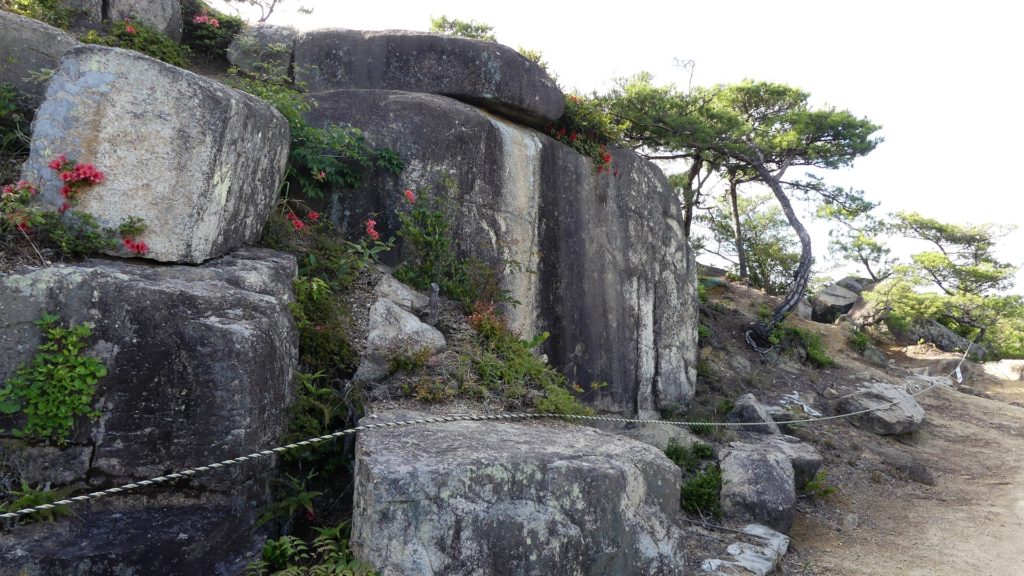
その門跡を過ぎると、勇壮な高石垣に至り、そこからの岡山平野の眺めは素晴らしいです。城の守備隊には、そこから城外の動きがよく見えたことでしょう。また、倉庫群があった場所にも遺跡が点在しています。
Passing the gate ruins, the high stone walls look great and the views of Okayama Plain are very beautiful. That also meant defenders in the castle were able to watch the situation outside. There are some other ruins scattered about where the warehouses once stood.
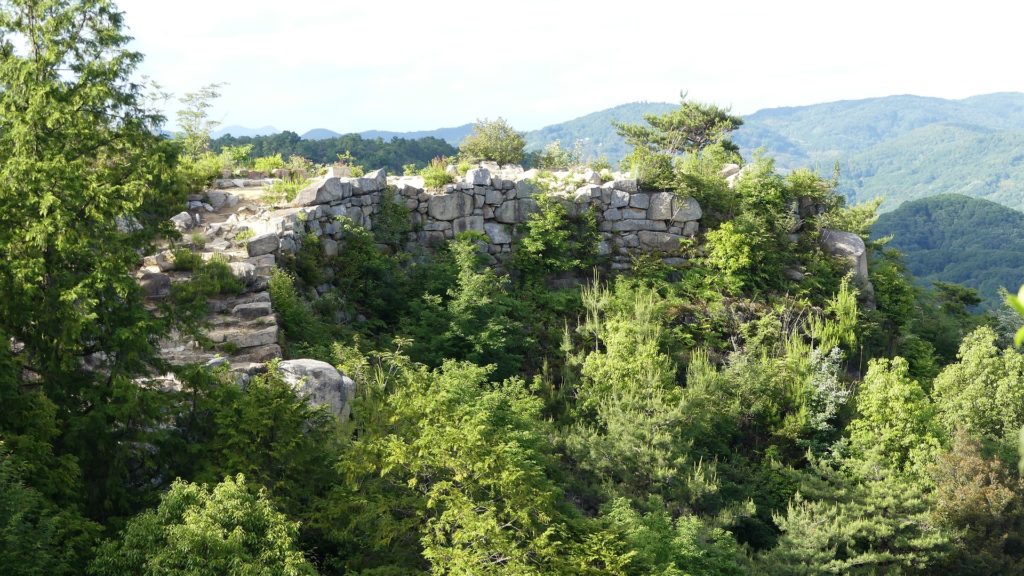
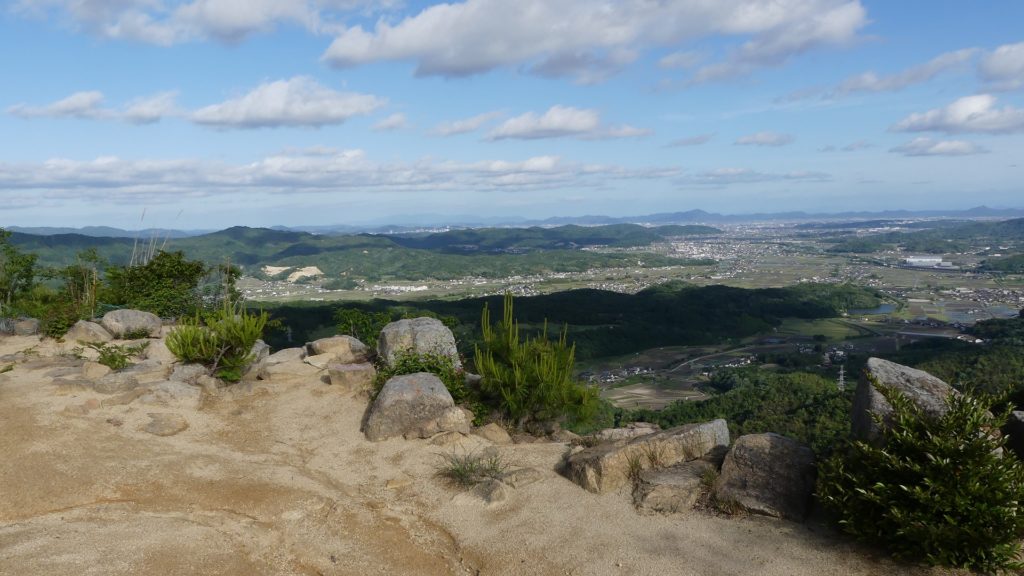

その後~Later History
鬼ノ城は、8世紀の初頭には放棄されてしまったようです。その後、城跡は寺の敷地になったり、仏教徒の修業の場となったりしました。戦国時代には、その一部分を城として再利用されたりしました。そしていつしか人々は、この城は最初は鬼が作ったものと考えるようになりました。
Kino-Jo was most likely abandoned in the first 8th century. After that, the ruins were used for temple grounds or training grounds for Buddhists. In the “Sengoku” or Warring States Period, warriors used part of them again as a castle. People thought the castle was originally built by a devil for some time.

1970年になって、ある歴史家が初めてここを史跡として調査し、古代山城の一つではないかと提唱したのです。このことが1978年に学会で認められ、ついには1986年に国の史跡に指定されました。それ以来、総社市が城跡を整備しています。
In 1970, a historian first explore the ruins as a historic site, and suggested that it might be an ancient mountain castle. That was proved by academic research in 1978. As a result, the ruins were designated as a National Historic Site in 1986. Since then, Soja City has been rebuilding them.

私の感想~My Impression
鬼ノ城跡は、日本で最もよく保全されている城跡の一つだと思うのです。城跡の一部は元あったように復元され、他の部分は良好な状態で保存されています。良いバランスです。また、ひと汗かきながら歴史の勉強もできるのです。
I think that the ruins of Kino-Jo are one of the most well conserved ones in Japan. Because part of the ruins were restored to look like the originals, and the others were preserved in good conditions. it’s a good balance. You can also choose to learn history while working up a sweat.
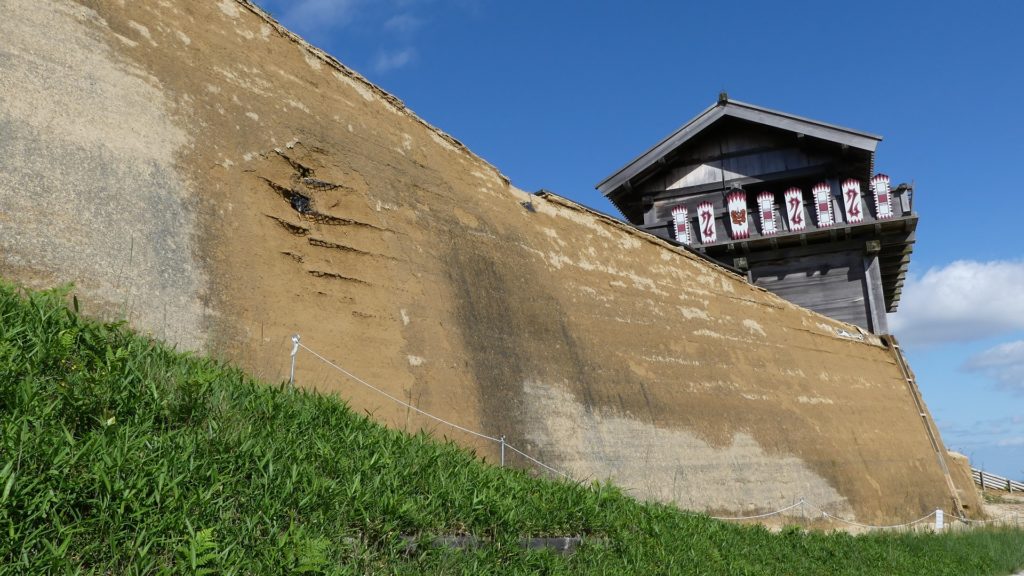
ここに行くには~How to get There
ここに行くには車がおすすめです。山陽自動車道の岡山・総社ICから約8kmの道のりです。ビジターセンターに駐車場があります。
I recommend using a car to get there. It takes about 8km away from the Okayama-Soja IC on Sanyo Expressway. The visitor center offers a parking lot.
リンク、参考情報~Links and References
・鬼ノ城、総社市公式観光WEBサイト(Soja City Official Site)
・「鬼ノ城/谷山雅彦著」同成社(Japanese Book)
・「歴史群像45号/鬼ノ城、吉備路を睥睨する古代山城」学研(Japanese Book)

